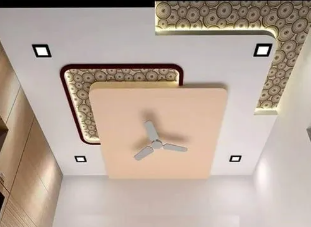Introduction
In the realm of construction and building materials, sustainability has become a paramount consideration. Gypsum, a versatile mineral widely used in construction for its fire-resistant and soundproofing properties, offers significant opportunities for sustainable innovation. This context explores the evolution of sustainable gypsum solutions, highlighting their environmental benefits, technological advancements, and their role in shaping a more eco-friendly construction industry.
Understanding Gypsum and Its Benefits
The transformative potential of sustainable gypsum solutions, emphasizing their role in advancing environmental stewardship and fostering a more sustainable built environment for future generations. Gypsum, primarily known for its presence in drywall and plaster applications, offers several key advantages:
-
Fire Resistance: Gypsum-based products provide effective fire protection, enhancing building safety and compliance with fire codes without compromising structural integrity.
-
Sound Insulation: Gypsum boards contribute to soundproofing within buildings, reducing noise transmission between rooms and floors, thereby enhancing occupant comfort and privacy.
-
Versatility: Gypsum is adaptable and can be used in various forms, including boards, panels, blocks, and decorative moldings, catering to diverse architectural and functional requirements.
Environmental Advantages of Sustainable Gypsum Solutions
-
Recyclability: Gypsum is highly recyclable and can be reprocessed multiple times without significant loss of quality. Recycled gypsum reduces waste generation and conserves natural gypsum resources.
-
Energy Efficiency: The production of gypsum products consumes less energy compared to alternative materials, contributing to lower carbon emissions and reduced environmental footprint during manufacturing.
-
Indoor Air Quality: Gypsum-based materials contribute to healthier indoor environments by regulating humidity levels and resisting mold and mildew growth, thereby promoting occupant well-being.
Technological Innovations in Sustainable Gypsum Solutions
-
Recycling Initiatives: Advances in recycling technologies allow for the efficient recovery and reuse of gypsum waste from demolition and construction sites, reducing landfill waste and promoting circular economy principles.
-
Green Building Certifications: Gypsum products contribute to achieving green building certifications such as LEED (Leadership in Energy and Environmental Design) by supporting sustainable building practices and meeting stringent environmental criteria.
-
Enhanced Performance: Ongoing research and development efforts focus on enhancing the performance characteristics of gypsum products, including improved fire resistance, acoustic properties, and durability, to meet evolving industry standards and sustainability goals.
Promoting Sustainable Practices in Construction
-
Lifecycle Assessment: Conducting lifecycle assessments (LCAs) helps evaluate the environmental impact of gypsum products throughout their entire lifecycle, from raw material extraction to end-of-life disposal or recycling.
-
Collaborative Initiatives: Industry collaborations and partnerships foster innovation in sustainable gypsum solutions, encouraging knowledge sharing, technology transfer, and best practices adoption across the construction sector.
-
Educational Outreach: Raising awareness about the benefits of sustainable gypsum solutions among architects, builders, and developers promotes informed decision-making and encourages the adoption of environmentally responsible building practices.
Conclusion
Sustainable gypsum solutions represent a crucial step towards achieving sustainability goals in the construction industry. By leveraging the recyclability, energy efficiency, and performance advantages of gypsum-based materials, stakeholders can contribute to building greener, more resilient structures while minimizing environmental impact. As demand for sustainable building materials continues to grow, investing in research, innovation, and sustainable practices ensures that gypsum remains a cornerstone of eco-friendly construction practices worldwide.

